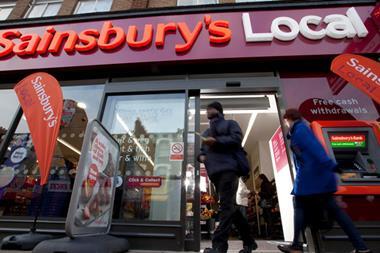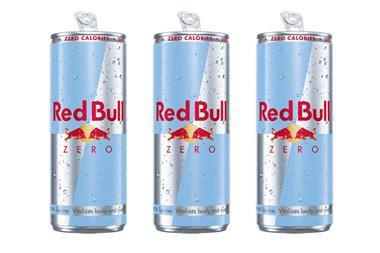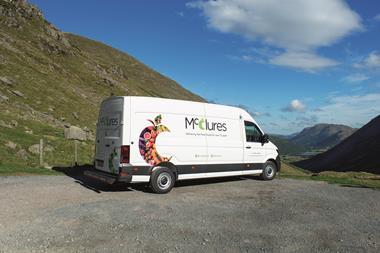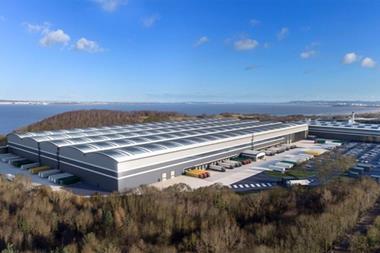The new electrical waste regs are bedevilled by uncertainty over responsibilities says Elaine Watson
Sorry for the disruption,” say signs pasted outside Sainsbury’s stores across the country. “We are making room for a whole new range of home accessories.”
Very soon, Sainsbury could also be responsible for taking them back - when an EU directive requiring retailers to recoup and recycle worn out electrical and electronic goods hits the UK statute books.
With less than two years before the Waste Electrical and Electronic Equipment (WEEE) directive comes into force however, no-one knows who will handle the worn out goods, and who will foot the estimated £455m annual bill.
As the responses to the government’s first consultation on WEEE this week reveal, there is a similar lack of clarity over when the costs will be incurred - when the goods are sold, or when the goods are returned.
“Most stakeholders,” says the DTI document, “favour the introduction of a visible fee paid by the consumer on the purchase of a new item although retailers in particular were concerned about the costs and administrative impacts.”
As to who should set or administer the fees, it adds, “there was no clear view”.
There was also no clear view on who should take responsibility and when. The directive spells out clearly that it is producers who will have to pay to recoup and recycle their wares, says Royal Mail’s warehousing and distribution general manager, Richard Rogers. “But who is the producer?” If Safeway or Tesco import their TVs, or sell them under their own brands, then Safeway and Tesco are the producers. “And if the onus is on retailers to pay for recycling their own label goods, will they rethink their procurement policies?”
The more pressing issue, however, is sorting out how the goods will be collected, says the British Retail Consortium. As it stands, WEEE places an obligation upon retailers to take back worn out goods whether they sort the bill with Electrolux or Panasonic later or foot it themselves.
And supermarkets in particular are not geared up to handle rusty, potentially hazardous electrical waste, says BRC corporate social responsibility policy director Nigel Smith, who adds: “We accept that retailers have an obligation to take back the goods, and if this isn’t practical, they have to offer an alternative.”
Yet the most obvious alternative - that local authorities develop civic amenity sites and recycling centres to include WEEE take-
back facilities, is equally problematic, he suggests. “For retailers to have separate contracts with several hundred different local authorities would be a nightmare”.
Moreover, as the DTI consultation has revealed, local authorities themselves are worried about the costs and responsibilities.
For larger retailers that already have sophisticated reverse logistics systems, goods could move back through existing supply chains set up for returns.
But for smaller retailers or those without reverse logistics, the path ahead is uncertain, says Wincanton business sector general manager Larry Boulton.
Probably the best solution, he says, is for third party logistics companies or reverse logistics specialists to take the lead and develop facilities and supply chains.
“The existing local authority infrastructure is just not geared up for WEEE,” says Boulton. “The waste disposal companies have big compacter vehicles - but these are no good for electricals that need recycling or repair. They don’t have the storage facilities.” As for most civic amenity centres, they don’t have the covered facilities that are essential for sorting and storing goods for re-use or repair.
The volumes of WEEE goods, estimated at up to 250 million items a year, are considerable, and so are the opportunities for an enterprising third party, says Boulton. In the meantime, fundamental questions remain, he adds. “Such as, who will pay for what - and who is responsible for what?”
Sorry for the disruption,” say signs pasted outside Sainsbury’s stores across the country. “We are making room for a whole new range of home accessories.”
Very soon, Sainsbury could also be responsible for taking them back - when an EU directive requiring retailers to recoup and recycle worn out electrical and electronic goods hits the UK statute books.
With less than two years before the Waste Electrical and Electronic Equipment (WEEE) directive comes into force however, no-one knows who will handle the worn out goods, and who will foot the estimated £455m annual bill.
As the responses to the government’s first consultation on WEEE this week reveal, there is a similar lack of clarity over when the costs will be incurred - when the goods are sold, or when the goods are returned.
“Most stakeholders,” says the DTI document, “favour the introduction of a visible fee paid by the consumer on the purchase of a new item although retailers in particular were concerned about the costs and administrative impacts.”
As to who should set or administer the fees, it adds, “there was no clear view”.
There was also no clear view on who should take responsibility and when. The directive spells out clearly that it is producers who will have to pay to recoup and recycle their wares, says Royal Mail’s warehousing and distribution general manager, Richard Rogers. “But who is the producer?” If Safeway or Tesco import their TVs, or sell them under their own brands, then Safeway and Tesco are the producers. “And if the onus is on retailers to pay for recycling their own label goods, will they rethink their procurement policies?”
The more pressing issue, however, is sorting out how the goods will be collected, says the British Retail Consortium. As it stands, WEEE places an obligation upon retailers to take back worn out goods whether they sort the bill with Electrolux or Panasonic later or foot it themselves.
And supermarkets in particular are not geared up to handle rusty, potentially hazardous electrical waste, says BRC corporate social responsibility policy director Nigel Smith, who adds: “We accept that retailers have an obligation to take back the goods, and if this isn’t practical, they have to offer an alternative.”
Yet the most obvious alternative - that local authorities develop civic amenity sites and recycling centres to include WEEE take-
back facilities, is equally problematic, he suggests. “For retailers to have separate contracts with several hundred different local authorities would be a nightmare”.
Moreover, as the DTI consultation has revealed, local authorities themselves are worried about the costs and responsibilities.
For larger retailers that already have sophisticated reverse logistics systems, goods could move back through existing supply chains set up for returns.
But for smaller retailers or those without reverse logistics, the path ahead is uncertain, says Wincanton business sector general manager Larry Boulton.
Probably the best solution, he says, is for third party logistics companies or reverse logistics specialists to take the lead and develop facilities and supply chains.
“The existing local authority infrastructure is just not geared up for WEEE,” says Boulton. “The waste disposal companies have big compacter vehicles - but these are no good for electricals that need recycling or repair. They don’t have the storage facilities.” As for most civic amenity centres, they don’t have the covered facilities that are essential for sorting and storing goods for re-use or repair.
The volumes of WEEE goods, estimated at up to 250 million items a year, are considerable, and so are the opportunities for an enterprising third party, says Boulton. In the meantime, fundamental questions remain, he adds. “Such as, who will pay for what - and who is responsible for what?”


















No comments yet